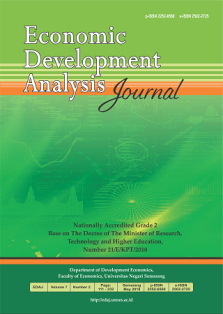SEM-PLS: Predicting Community Welfare and Unemployment Using Income Inequality
Abstract
This study investigates the complex theoretical relationship between income inequality, open unemployment, and social welfare using SmartPLS 3.0 structural equation modeling tools. The data consists of a panel dataset, which includes cross-sectional data from the provinces of Sulawesi Island (Gorontalo, South Sulawesi, North Sulawesi, Central Sulawesi, Southeast Sulawesi, and West Sulawesi) and time series data spanning from 2010 to 2022. The data are sourced from secondary data provided by the Indonesian Central Statistics Agency. The results of the outer model test indicate that only the manifest variables—the Gini ratio and the unemployment rate in West Sulawesi—are not valid and reliable. The inner model test results demonstrate that income inequality and open unemployment negatively and significantly impact community welfare, while income inequality positively and significantly affects the unemployment rate. Based on these findings, it is recommended that policymakers and practitioners design and implement policies aimed at reducing income inequality and addressing unemployment issues. Such efforts are expected to impact the overall welfare of communities across Sulawesi Province positively


